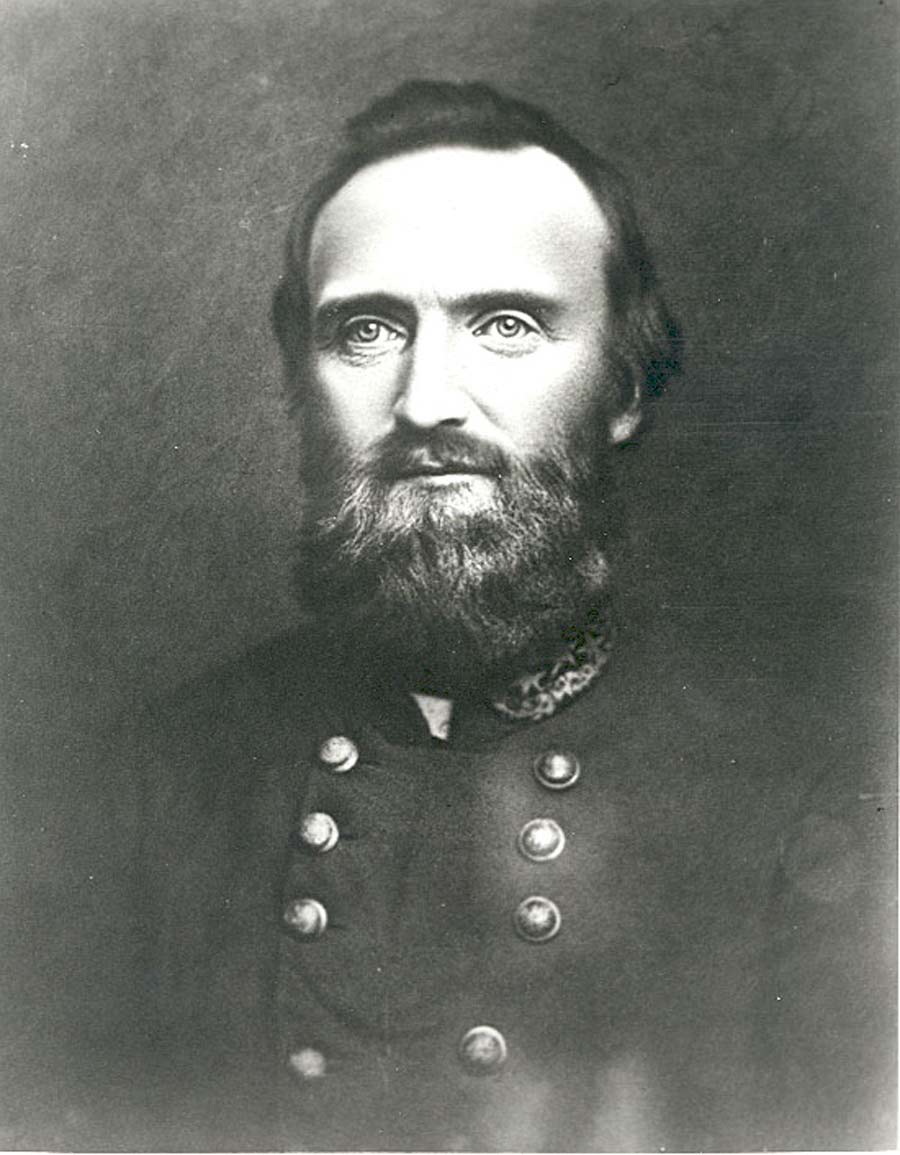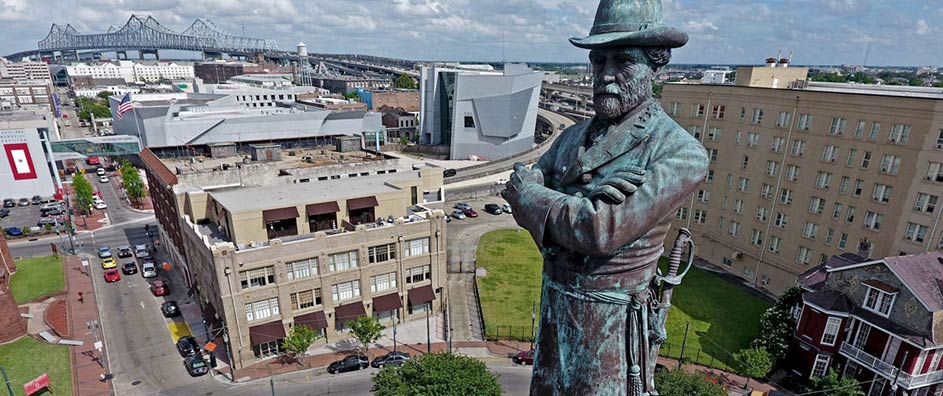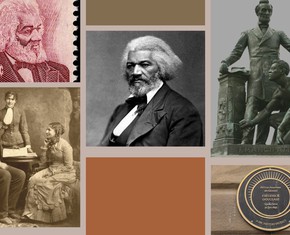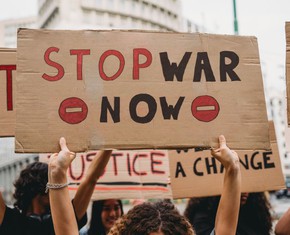The views expressed in our content reflect individual perspectives and do not represent the authoritative views of the Baha'i Faith.
Now it’s not just New Orleans—several other cities have begun to think about removing the old symbols of white supremacy and racism.
Just in the past two years, various local and state governments across America have removed, destroyed or renamed more than 60 publicly-funded depictions of the Confederacy. The Southern Poverty Law Center says this trend accelerated after the 2015 massacre by a white supremacist of nine black parishioners in a Charleston, South Carolina church. Several cities, counties and states that prominently flew the old Confederate battle flag—the “Stars and Bars”—have taken those flags down and put them in museums.

Thomas Jackson
In May of 2017, just as one example of this trend, the City of Charlottesville, Virginia decided to remove a prominent statue of Robert E. Lee, the Confederate General. The City Council there voted to put General Lee and his bronze horse up for sale to the highest bidder. They also decided to change the names of Lee and Jackson parks in the city, named for the General and another Confederate, Thomas “Stonewall” Jackson.
Controversy ensued. Public protests broke out, both for and against removing Lee’s statue. A group of residents sued, sending the ultimate decision to the courts. A so-called “alt-right” white supremacist group carried torches in their protest against the statue’s removal, purposely evoking images of past Ku Klux Klan rallies. The controversy became national and even international news, and one opinion piece in the New York Times editorial pages commented:
The white supremacist protest in Charlottesville, Va., this month over a plan to remove a statue of Robert E. Lee, the Confederate general, shows how this is likely to go. The marchers feigned civility. But a closer look shows that the protest drew on the toxic symbolism of the Third Reich in ways that few Americans would recognize.
By wielding torches in a protest staged by night, the demonstrators nodded to Nazi rallies held during the 1930s at Nuremberg, where the open flame was revered as a mystical means of purifying the Aryan spirit. They reinforced this toxic connection by chanting “blood and soil,” a Nazi-era slogan that connected German ethnic purity to cultivation of the land and, more broadly, to the notion that the “master race” was divinely entitled to confiscate the holdings of “lesser peoples,” even if it meant slaughtering them along the way.
The demonstrators at Charlottesville … had no real interest in the civic or aesthetic value of the monument they ostensibly came to defend. The essence of their argument was that any attempt to renounce Confederate ideology by moving this—or any—monument would be an assault on the so-called white race.
Nazism and the tradition of American white supremacy that is memorialized in monuments throughout the South are the fruit of the same poisonous tree. In this light, the Confederate flag can legitimately be seen as an alternate version of the Nazi emblem. – Brent Staples, How the Swastika Became a Confederate Flag, The New York Times, May 22, 2017.
The next night, after the alt-right, neo-Nazi demonstration, a much larger demonstration took place—this one against hatred and bigotry, with hopeful candles burning rather than hateful torches.
Those symbols of hatred, no matter what their origin, all represent the repugnant, hideous idea that entire groups of people, because of their ethnicity or their nationality or their skin color, are evil. Of course, once that decision occurs in any culture, the supposedly “evil” ones become easier to single out, target and slaughter. In just about every historical instance, those symbols of hate define the first steps on the path to terror, murder and genocide.
The Baha’i teachings clearly and pointedly say that no human being has the right to see any other human being as evil—especially not for any racially-based bias:
We have no right to look upon any of our fellow-mortals as evil.
Concerning the prejudice of race: it is an illusion, a superstition pure and simple! For God created us all of one race. There were no differences in the beginning, for we are all descendants of Adam. In the beginning, also, there were no limits and boundaries between the different lands; no part of the earth belonged more to one people than to another. In the sight of God there is no difference between the various races. Why should man invent such a prejudice? – Abdu’l-Baha, Paris Talks, p. 148.
So yes, many cultures do have a heritage of hate. The whole Earth has been stained, throughout human history, with the blood of that inheritance. But that does not mean we must exalt or somehow glorify those who perpetrated such hatred, or prominently display their symbols for all to see.
So what’s the solution? If your city or town has a monument to hatred, violence or prejudice, what should you do about it? In the next essay in this series, we’ll explore a unique suggestion—originally made by the citizens of Charlottesville themselves—which may soon take hold in many places that have a history of hatred to face.
You May Also Like
Comments

















Personally, I like that Confederate statues and symbols are coming down. I think putting them in museums where they can be shown and explained in their historical context would be a good idea.
Ready to take down the Lincoln Memorial?